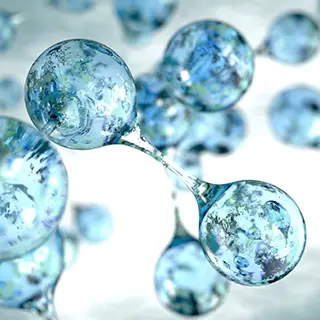
Developments In Clean Hydrogen Production

By Gabriel G. Silva and William L. Mizell
The recent release of proposed regulations to the Clean Hydrogen Production Credit by the US Department of the Treasury and Internal Revenue Service (IRS) has stirred significant interest in the energy sector. These changes mark a pivotal moment in advancing towards a cleaner, more sustainable energy economy. Ongoing review and analysis will be crucial as stakeholders adapt to these regulations, reflecting the evolving landscape of clean hydrogen production and its role in achieving sustainability goals.
What Is Hydrogen And Why Is It Important?
Hydrogen has been touted as the fuel of the future for years. And this is no surprise in an era of energy transition and net zero emission goals. When hydrogen is burned, it releases only water. Thus, hydrogen is cleaner than other fossil fuels.
The problem, however, lies in how hydrogen is produced. Yet, with the advances in technology as a means of production, hydrogen has now emerged as an economically viable fuel source. In fact, the Clean Hydrogen Production Credit aims to provide financial incentives that are tied to the production methods of hydrogen. The lower the environmental impact on the production process, the greater the potential for financial incentives.
What Do The Different Colors Of Hydrogen Mean?
The different types of production and attendant levels of environmental impact are often described in a variety of hues, painting a vivid picture of innovation, sustainability, and environmental responsibility. Green, blue, and grey hydrogen are generally the three colors used to describe different means of production.
Green hydrogen is produced using wind and solar power through a process called “water electrolysis.” It is currently being utilized in long-distance transportation to power cargo vessels and airplanes.
- Pros: Best for the environment — no greenhouse gas emissions.
- Cons: Expensive to produce and poses safety concerns in consumer settings.
Blue hydrogen is produced through a process called “steam methane reforming” which burns natural gas as its energy source. Blue hydrogen is also used in transportation to power cars, trucks, and trains.
- Pros: Lower greenhouse gas emissions than conventional hydrogen production.
- Cons: By-product is carbon dioxide, making carbon capture and storage essential to overall process.
Grey hydrogen is produced similarly to blue hydrogen but without carbon capture.
- Pros: Most cost-effective approach.
- Cons: Highest negative impact on the environment as carbon capture is not part of the process.
Proposed IRS Regulations On Hydrogen Production
The energy source that is used to produce the hydrogen has important financial implications. If the hydrogen is produced from clean energy (i.e., green hydrogen) or low-carbon energy (i.e., blue hydrogen), a producer may be entitled to substantial financial incentives via tax credits under 26 U.S.C. § 45V — often referred to simply as “45V.”
Recently, the IRS and the Department of the Treasury released regulations regarding the Clean Hydrogen Tax Credit, clarifying eligibility requirements and emphasizing documentation and verification for hydrogen production and usage. Industry players have been especially concerned with tax credit eligibility in the context of co-mingling hydrogen generated from different production processes (green/blue/grey hydrogen). These regulations attempt to clarify how eligibility will be analyzed when a party obtains hydrogen that may have been produced from multiple and different fuel sources (clean energy, natural gas with carbon storage, or simply natural gas).
The regulations also address greenhouse gas emissions determination, time matching considerations, anti-abuse rules, and guidelines for hydrogen usage and storage. These regulations would affect taxpayers who claim the production credit as they either produce qualified clean hydrogen, manage a hydrogen production facility, or produce electricity from certain renewable or zero-emissions sources.
About The Authors
Gabriel G. Silva and William L. Mizell are attorneys for Stone Pigman. The firm provides guidance on raising capital for new projects and expansion needs as well as regulatory compliance with the procedures and rules from state and federal agencies. It has experience in assisting clients in a variety of industrial and clean energy projects —including real estate transactions for large liquefied natural gas (LNG) facilities and obtaining project permits related to carbon capture.









